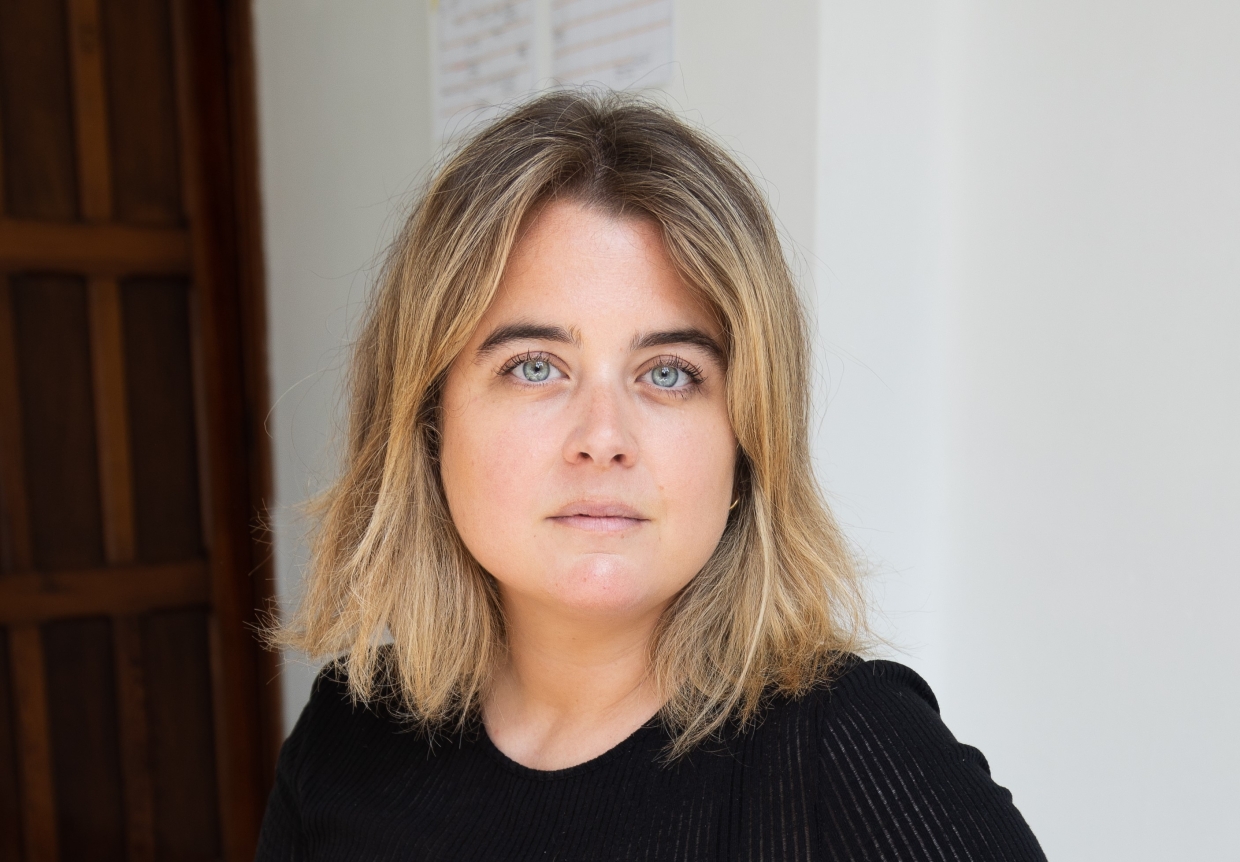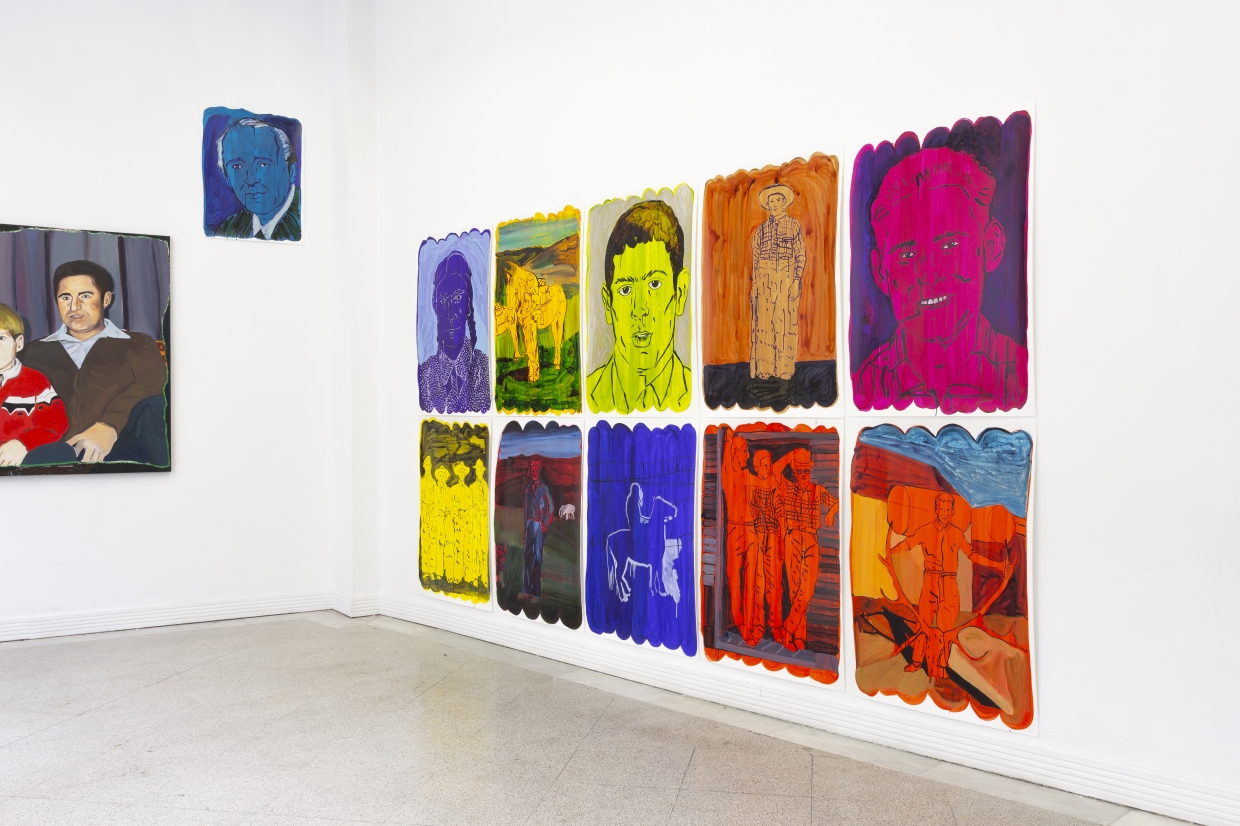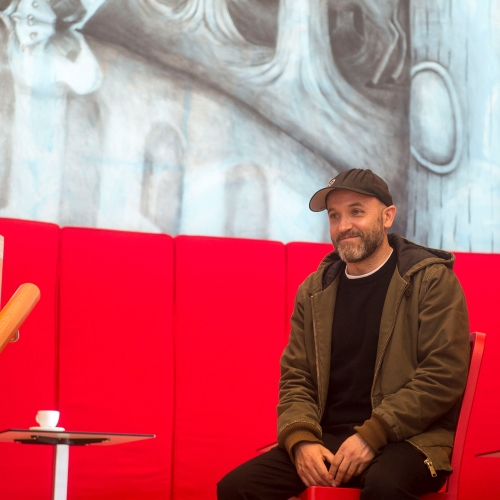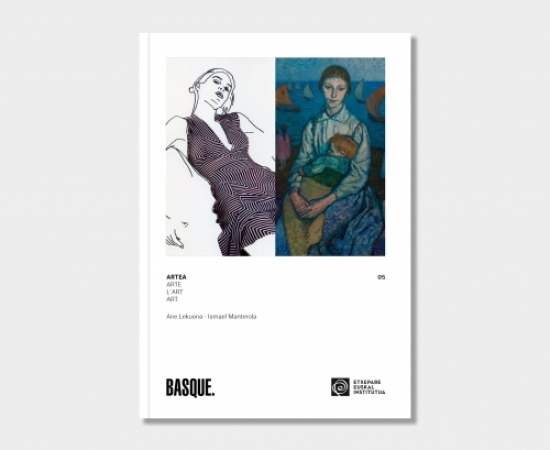Gala Knörr: “Basque diaspora has been better represented in dance and gastronomy than in contemporary art”
2025/06/24
Etxepare Basque Institute-promoted Frank Bidart Artistic Fellow Gala Knörr discusses her creative projects after her California State University Bakersfield residency.
Euskara. Kultura. Mundura.

Gala Knörr has been chosen as this year´s Frank Bidart visiting researcher-artist to develop a creative project for the 2025 artistic fellow residency, promoted by the Etxepare Basque Institute. She has previously held artistic and research residencies at venues including the Azkuna Zentroa in Bilbao, Tabakalera, the Cité Internationale des Arts in Paris, Goldsmiths, University of London, and the Solomon R. Guggenheim Museum in New York. As a beneficiary of the Frank Bidart Fellowship, Knörr carried out the artistic project “La luz que nunca se apaga” (The light that never goes out) after her residency at California State University Bakersfield. We met with her to talk at length about her work, the fellowship, and art in general.
Given the ongoing digital transformation, your study focuses on images, their meanings, and their influence on our collective consciousness. In this context, how important do you consider the medium – such as celluloid or advertising –to be in shaping these perceptions?
This idea that whoever controls the narrative has power has been in my head for a long time. Images can convince us of an idea, a story, an action; they have the power to generate emotions. They are a double-edged sword, both in cinema and advertising, where major production companies and corporations have crafted stories and narratives that can influence and shape default thought patterns. Additionally, they’ve promoted products and beliefs that have permeated society throughout the 20th and 21st centuries. Images are incredibly powerful, and today, with the ease of sharing and spreading information through the Internet and social media, their influence has become even greater.
Apart from conducting artistic research, you have also developed your artistic practice throughout your career. Do the two form a logical continuation, in your opinion? To what extent is one side sacrificed when pursuing both?
I’m not sure if they have a clear logical progression from an outside perspective, but for me, they do. Many of my projects revolve around the theme of community—whether through social media and humour, our shared history as the Basque diaspora, or in club culture and raves. All my research is infused with nuances closely connected to the context and the era in which we live, shaped by life experiences and characterized by very specific ways of representing ideas and themes. It´s quite organic that my practice is so intrinsically linked to all of this. Although, perhaps, when sharing my artistic work, part of the journey that led me there is not always visible or obvious. There has to be some mystery left.
The project “La luz que nunca se apaga” aims to transcend the one-dimensional and stereotypical role that Basque women have been given in Westerns. What kind of link is there between this work and “The Seekers” the project you developed in 2022?
When I presented the exhibition [‘Soy tu huckleberry’] at DA2 in Salamanca in 2023, alongside curator Adonay Bermúdez, I displayed the year-long project ‘The Seekers’, which I had created at the BilbaoArte Foundation. It was then that I realised that most of the works only told part of the story: that of the lonely [man] on the mountain. The women, however, appeared only in anecdotally.
For a long time, I wanted to explore the figure of the Basque migrant woman: her daily life, the stories that had yet to be shared, and the unseen experiences she endured, why she wasn’t part of this rich, hyper-malleable imaginary. With “La luz que nunca se apaga”, being in Bakersfield, seeing all those spaces where the Basque community still gathers, meeting different women from several generations, listening to their stories, one quickly realises that they were (and possibly still are) the backbone of the community.

How did those women and the Basque diaspora in California inspire you?
Women were entrepreneurs: they opened businesses, financed initiatives, looked after their families, shared culinary traditions... They also actively contributed to preserving the Basque language, encouraging younger generations to become bilingual or even trilingual in some cases. Many of the Basque boarding houses became restaurants, some of which are still run by women today. Learning about this history in situ and directly from the original sources has been an unusual, almost exotic journey — because, after all, this is inland California, very different from the usual glitz of neighbouring Los Angeles — and at the same time magical, because you see glimpses of your own home in such a foreign context. The generosity of the Basque community in Bakersfield has been boundless.
Do you want to know more about basque art? Download this book
In terms of the Frank Bidart Fellow, can you describe what your work has involved and share some of the highlights?
During my residence, I did a lot of fieldwork. It was important for me to sit down face to face (or via Zoom) with everyone who wanted to collaborate with my research. I gave an public lecture at a symposium organised by the Institute for Basque Studies, where I had the pleasure of learning about The Arborglyph Collaborative, a project led by Dr. Steven Gamboa and Chris Livingston. The project aims to preserve the visual heritage of tree bark carvings. It had a significant impact on how I think about my own work from an artistic perspective. Also, thanks to artist and Bakersfield College professor Ryan Rickard, I led a talk open to students from different disciplines to discuss his work and processes. During my stay in Bakersfield, Jedediah Caesar and Patricia Fernández introduced me to a beautiful project about the transhumance routes of Basque shepherds. Jedediah is also responsible for the Todd Madigan Art Gallery at the university, a place I hope to revisit through the work I plan to create based on this project.
How is the Basque diaspora represented in contemporary popular culture?
I think the most notable examples tend to be works of literature, starting with Robert Laxalt´s autobiographical novels. But we also have Mary Austin´s novel ’The Flock’ (1906) and the Frank Bergon trilogy, which features a wide range of Basque characters. In art, we find the most emblematic figure in Nestor Basterretxea, and more recently perhaps in the artist Patricia Fernández. Her connection with the landscape and territory of California led her to explore the history of Basque shepherds. In cinema, I think it’s been explored more through documentaries, but for me the most interesting thing is its link to Western aesthetics. It’s interesting to see how new voices are gradually emerging to keep this memory alive, and how each creator or artist approaches it from different perspectives. Ultimately, the Basque diaspora has been better represented in dance, gastronomy and community festivals than in contemporary practices. This absence may in itself be a symptom – but above all, it is an opportunity.
Etxepare Basque Institute and the artist
Funded by Etxepare Basque Institute, Gala Knörr is Frank Bidart 2025 visiting researcher-artist to develop a creative project for the 2025 artistic fellow residency at the California State University Bakersfield, at the Basque Studies Institute.





